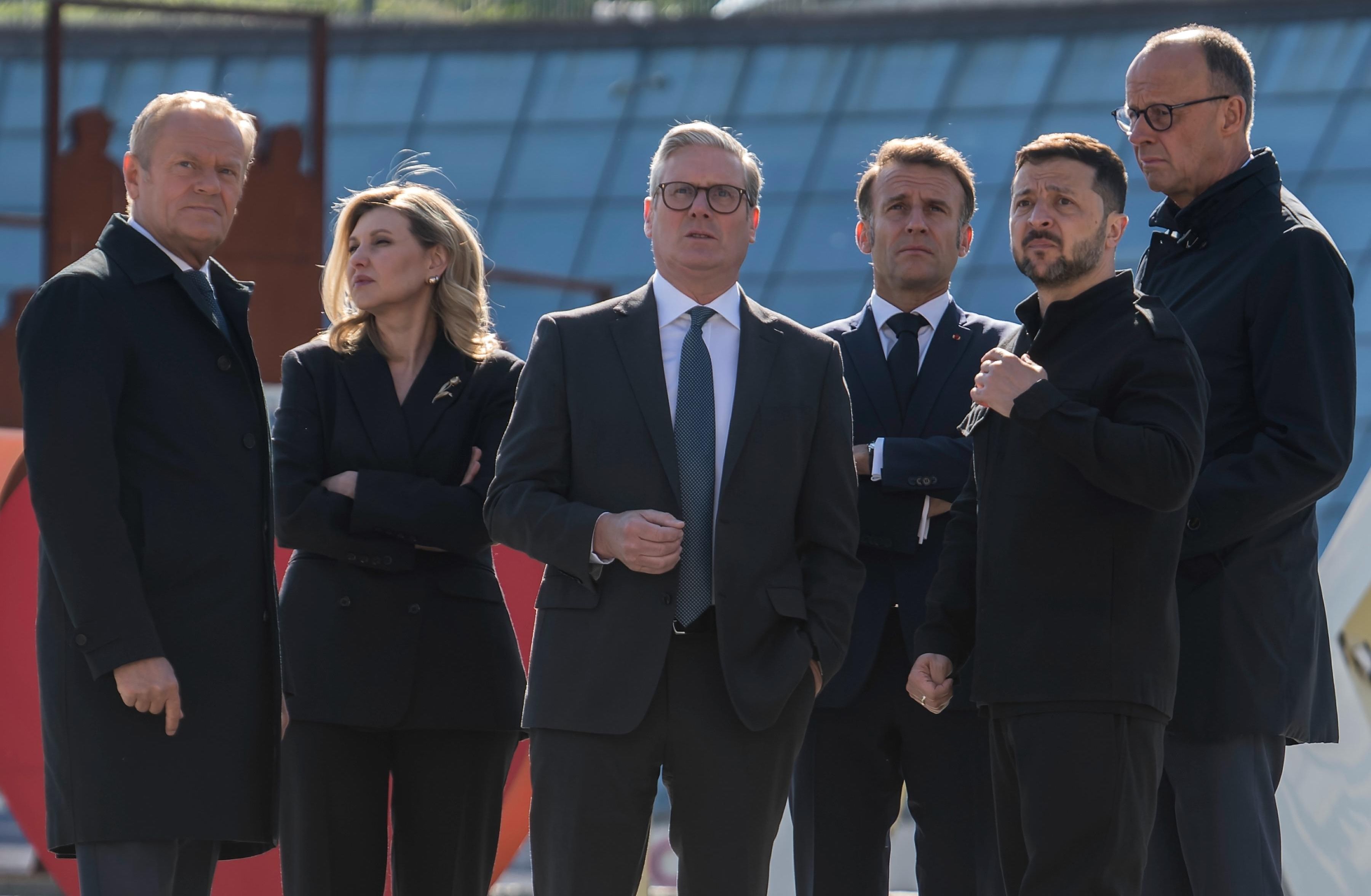A familiar and disheartening pattern is emerging in European capitals following the presentation of a 28-point peace plan by the Trump administration. Just as after Donald Trump’s summit with his Russian counterpart Vladimir Putin in Alaska this past August, European leaders are offering public lip service to Trump’s efforts to end the war while maneuvering to sabotage any initiative that deviates from their maximalist — and unattainable — goals of complete Russian capitulation in Ukraine.
Their goal appears not to be to negotiate a better peace, but to hollow out the American proposal until it becomes unacceptable to Moscow. That would ensure a return to the default setting of a protracted, endless war — even though that is precisely a dynamic that, with current battleground realities, favors Russia and further bleeds Ukraine.
The European reaction to Trump’s proposal has been swift and revealing. According to Bloomberg, Keir Starmer, Friedrich Merz and Emmanuel Macron, the leaders of Britain, Germany and France respectively, have hastily joined Zelensky in rejecting key elements of the Trump plan. Berlin has emerged as the chief hawk among the Euro Trio and reportedly is developing a counter-proposal far more attuned to Ukraine’s position.
Meanwhile, the EU high representative on foreign affairs Kaja Kallas outlined the bloc’s grand strategy for achieving peace with devastating simplicity: first, weaken Russia; second, support Ukraine. That’s it. One would search completely in vain for a diplomatic off-ramp, a vision for a future European security architecture, or even a basic acknowledgment of the compromises necessary to stop the killing in this “peace plan.” For it is no such thing: it is pure virtue signaling that translates into a perpetual conflict on the ground, with further destruction of Ukraine and growing risks of escalation and expansion of the war in Europe.
Yet European politicians’ knee-jerk rejection of the Trump plan as a “capitulation” is misguided. As Russia scholar Mark Galeotti argues, while the plan is “poorly drafted and incomplete,” it is “not a simple call for Ukrainian capitulation” and “as a starting point for something that could stop the killing, it has some promise.”
A serious examination reveals a structure aimed at a stable, if imperfect, peace: a 600,000-strong Ukrainian army that aligns with what analysts believe Kyiv can sustain; a finesse on occupied territories in Donbas and Crimea that avoids forced de jure recognition of Russian sovereignty over them; and a mechanism to funnel $100 billion of frozen Russian assets to Ukraine’s reconstruction.
Territorial question is likely to be the thorniest to negotiate. By contrast, a demand that Ukraine foregoes NATO membership shouldn’t be a dealbreaker — those European leaders who now oppose Trump’s plan know full well that Ukraine won’t be joining the NATO, in part because they themselves haven’t shown any readiness to directly fight for it. Then what is the point of prolonging the war by insisting on something both sides — existing NATO members and Ukraine — know is not going to happen?
Further, the provisions in the Trump plan to safeguard the minority and religious rights of different groups in Ukraine have reportedly met objections. But the plan explicitly stipulates that the benchmarks for realization of such rights are to be based on EU frameworks, not unilateral Russian impositions. Besides, as a multi-ethnic, multi-religious society, the protection of minority rights is a long-term investment in Ukraine’s security and should be welcomed by those who claim to be its supporters.
Crucially, this potential diplomatic opening is not emanating from a position of Russian weakness. Putin has explicitly stated that the "current dynamic on the front line... is leading to the achievement of [Russia's] goals by military means." Yet, in a critical window of opportunity, he has also confirmed that Russia received the 28-point U.S. plan and is ready to negotiate on its basis. Putin acknowledged that the plan could be a foundation for a final settlement. This is not a sign of a Kremlin rejecting diplomacy out of hand, but one testing its possibilities.
Europe now faces a stark choice. It can continue its current course — deriding the plan, encouraging Kyiv to insert poison pills, making its own unreasonable counter-proposals and hoping to scuttle it within Washington itself.
But this gamble carries an enormous risk. What if Trump, using a combination of pressure and persuasion, successfully convinces President Zelensky — obviously weakened by major corruption scandals in his entourage — that accepting the plan is Ukraine's least-worst option? If Kyiv signs on and Moscow engages, Europe risks finding itself completely excluded from the settlement that ends the largest war on its continent in decades. Having offered no credible alternative beyond more war, its influence would evaporate, and it would be forced to comply with the terms of a deal it played no part in shaping.
Seemingly trying to avoid that scenario, Merz spoke with Trump on Friday in what he characterized as a “good call,” but without giving any details due to its confidential nature.
It remains to be seen what will come out of it, but moving forward, it’s crucial to remember that any realistic plan will require painful compromises. A lasting settlement will remain impossible so long as key stakeholders in Europe refuse to move beyond a strategy whose sole components are weakening one side and arming the other.
By working to hollow out the only serious negotiation on the table, Europe is not protecting Ukraine; it is condemning it to more bloodshed and itself to strategic irrelevance. Right now, the alternative to Trump’s flawed but real plan is not a better deal — it is just endless war, and Europe will bear the consequences alone.
- Trump's '28-point plan' for Ukraine War provokes political earthquake ›
- The flimsy UK, France, Ukraine 'peace plan' discussed Sunday ›
- Ukraine and Europe can't afford to refuse Trump's peace plan ›
















